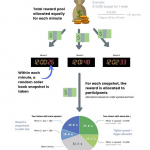Defending against the uncertainties of the future is expensive.
Today, a network of insurance companies exists to insure the insurance companies that insure insurance companies that insure people against uncertainties as varied as sinkholes and tornadoes.
It’s a process called ‘reinsurance’, and there’s even something called a ‘retrocessionaire’, a company that insures the reinsurance companies against even broader liabilities.
At every turn in this complicated, $4.5tn mesh of insurance services are parties and counterparties, of all shapes and sizes trying to eke out the most efficiency possible from their particular quadrant of the system.
To stay ahead of the competition, a group of five of the largest insurance companies in the world have been working since October to use blockchain to do exactly that. But progress on the effort dubbed B3i kicked up a notch earlier this year, when the consortium added 10 new members and laid out the plan for a real-world blockchain application.
As detailed to CoinDesk, the group is now working on a prototype aimed at simplifying the way reinsurance companies deal with ‘excessive loss’ resulting from property damaged as a result of catastrophic risks.
If successful, the app being constructed with open-source code provided by the Hyplerledger blockchain consortium has the potential to cut down settlement times between reinsurance companies and insurance companies from as long as seven weeks, to nearly instantly, while making a number of other improvements along the way.
In conversation with CoinDesk, B3i co-founder Paul Meeusen explained how a team of 15 individuals is working in a tailor-made office in Munich with a single goal in mind – to complete the prototype in just three months.
Meeusen, head of finance and treasury service at Swiss Re, said:
“We are trying to make the contract set-up all the way to settlement…much leaner, and also a much better customer experience for our reinsurance clients.”
Work so far
B3i launched last year with founding members Aegon, Allianz, Munich Re, Swiss Re and Zurich Insurance Group, and soon added several more, including Liberty Mutual, Sompo Japan Nipponkoa Insurance and Tokio Marine Holdings.
After an initial exploratory phase where each of the members committed three employees to the project, ‘friendly competitor’ Munich Re dedicated part of a two-floor tech laboratory in Munich to the consortium with the goal of implementing an an agile scrum development methodology.
Beginning last month, a joint development comprised of members of the consortium engaged in six two-week ‘sprints’ with a number of objectives toward the goal of creating a risk property insurance contract that self-executes on a single ledger upon which each insurance company can do business.
By using blockchain to create a common technology protocol, Meeusen believes his employer and the other members of the consortium will be able to focus on competing in ways that actually impact their clients, instead of getting distracted by technological differences.
“I will still compete against Munich Re thinking my risk assessment and my pricing is better,” said Meeusen. “But it will be one platform. So, better and faster for you as a buyer of reinsurance.”
Russian doll insurance
Today, reinsurance companies help ensure the insurance companies that support corporations and people remain solvent, in even the direst circumstances. Typically, the reinsurance only kicks in in extreme scenarios, hence the focus on catastrophes.
But as a result of these complicated relationships, reconciliation times between each company’s independently-managed ledger can take weeks.
By the the time the exchange rates are calculated across multiple currencies and the cash is freed up in the right amount, almost two-thirds of a quarter could elapse, resulting in an almost continual state of reconciliation. Instead, B3i’s Munich operation is working to use Hyperledger tech to move that entire process to a single, distributed ledger.
The results Meeusen forecasts include savings of working capital as a result of more efficient controls over premium collection and claims reimbursement, decreased transaction costs resulting from more efficient foreign exchanges and fewer operational risks as a result of the same process being repeated by insurers, brokers, reinsurers and retrocessionaires.
“Sharing, with some intelligence, and safety, really seemed like a magic combination,” said Meeusen. “Because those were really the three things I’d seen for a long time as the key to the issues we were dealing with.”
Common language
Going forward, Meeusen says B3i will focus on two main areas of improvement.
First, he says that the consortia is in the process of converting the data standards and forms provided by insurance standards company Acord into the smart contract language selected by the group.
While he didn’t share the smart contract language being used by B3i, he said earlier work done internally at Swiss Re was being executed using ethereum’s Solidity.
At the moment, the contracts are being designed to settle transactions in the fiat currencies accepted by the members. But in the future, he’d like to be able to accept cryptocurrencies as a way to settle balances between counterparties with longer-term contracts.
Second, the consortium has put in place a process for interacting with large insurance brokers around the world, including in North America, who he says have expressed interest in joining.
Already, existing B3i member, Germany-based Allianz, has tested an internal blockchain solution for catastrophe bonds, and New York-based Symbiont offers its own catastrophe swaps blockchain solutions to insurance companies.
While applications to join B3i are currently closed, come June when the consortium reveals the results of its prototype, that will likely change.
“We then want to very openly do a roadshow type of information sharing, to really share what worked, and what did not work so well,” he said, concluding:
“Only then proceed to the next step, if all goes well, to operationalize what we have already done and further widen the scope.”
Home on a cliff image via Shutterstock














